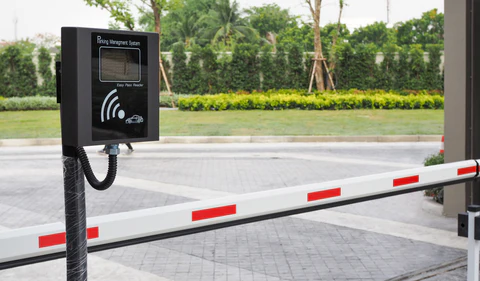What Gate Access Control Means Today
Property protection has evolved swiftly alongside digital technology. Gone are the days when a single chain-and-lock sufficed for perimeter security. Now, homeowners, HOAs, and businesses demand smart systems that not only stop unauthorized entry but also streamline flow and bring peace of mind. Access control is key to modern site management, whether for a gated residential community or a sprawling logistics hub.
As the adoption of security technology rises, so does curiosity about the real cost behind installing or upgrading to the best gate access control solutions. The answer isn’t straightforward, and understanding what factors are included in pricing is the best way for buyers to align aesthetics, safety, and budget. From robust automation to remote management, today’s systems offer multiple layers of intelligence—each carrying its own financial implications and value to the end user.
Driving Trends in Access Control Technology
The evolution in access control is happening at breakneck speed. Cloud-based management and touchless access have become expectations in light of efficiency and health considerations. Property managers want to handle visitor access, maintenance calls, and emergencies from a mobile app—highlighting why solutions must keep pace. The ability to synchronize gates with other security components like alarms and live cameras has quickly moved from a luxury to a necessity in many sectors.
Biometric authentication is also on the rise. Fingerprint, face, and voice verification don’t just provide a futuristic user experience—they can mitigate risk by tying entry permissions directly to an individual and eliminating the classic security loophole of shared keycards. According to global security research, innovation and heightened demand have led to significant industry growth and an expanding range of available products and pricing structures. The result is a landscape where customized access—both by user and cost—is possible and expected.
Essential Features of Modern Systems
A modern gate access control system can be packed with features, and each directly impacts the total installation and lifetime price. The lowest-priced systems generally offer a single authentication method, such as a basic keypad or remote transmitter. Mid-tier and premium systems layer technologies provide enhanced function and redundancy. These systems might include features such as remote access from smart devices, live visitor video calling, integration with intruder alarms, and real-time event logging.
- Remote management: Grant, revoke, or update user permissions from anywhere.
- Biometric credentials: Secure entry through fingerprint or face recognition.
- Mobile and RFID-based access: Encrypted key fobs, tags, or smartphone apps for seamless and secure controls.
- Camera and alarm integration: Combine with video intercoms or CCTV for extra verification and evidence recording.
- Scalable Reporting: Export logs and user activity for security auditing or dispute resolution.
Selecting the right features can help prevent costly upgrades in the future. For example, a growing business park may choose open architecture today, allowing easy expansion into new buildings without replacing all hardware. Or, a community association might invest in visitor tracking to reduce the manual workload on security guards and automate after-hours check-ins. Ultimately, your chosen features should align tightly with your site’s daily reality and long-term plans.
Balancing Practicality With Security
Usability is pivotal. Even the most advanced system offers little value if people can’t use it efficiently. A well-chosen access control system threads the needle between robust security and frictionless operation, encouraging compliance and reducing the risk of “workarounds” that leave sites vulnerable. Intuitive dashboards, clear notifications, and simplified credential management are vital for everyone—from teenage residents to older employees or frequent delivery drivers.
Modern concerns go well beyond physical trespass. Cybersecurity and ongoing software maintenance become essential as systems tie into Wi-Fi, cellular data, or cloud networks. Continuous updates and encrypted communications can prevent hacking and protect credentials (and resident privacy). The best solutions combine a solid physical “front line” with advanced authentication technology and vigilant digital protection, as emphasized in industry news and trends. For buyers, this means budgeting for continued service and updates, not just hardware and installation. It also requires partnering with providers who offer long-term support, transparent upgrade paths, and training resources to keep users confident and systems resilient. In the end, security is only as strong as its weakest point—often not the technology itself, but how people interact with it.
Key Gate Access Control System Cost Factors
The price for a gate access control system hinges on multiple, sometimes overlooked, factors. Hardware—such as card readers, barriers, or biometric scanners—is the most visible element, but software and user licenses, cloud subscriptions, maintenance contracts, and professional installation often represent a significant share. Buyers should also budget for site preparation, such as trenching for electrical, upgrading old wiring, or integrating with legacy gates if retrofitting.
The type of property and its usage patterns matter. Single-family homes may only require one control panel and a few transmitters, while commercial properties with several entry points could need extensive wiring, networking infrastructure, and multiple management consoles. Custom features like remote programming, live video intercoms, or vehicle license plate recognition inevitably push costs higher. Requesting a detailed itemization of parts and labor is worthwhile to avoid budget surprises.
- Number of access points/gates requiring upgrade or installation
- Type and mix of authentication: keypad, RFID, biometric, or multi-factor
- Integration with other property management or security systems
- Wired versus wireless configurations
- Ongoing cloud, subscription, and maintenance fees
Savvy buyers often save on costs by choosing modular systems that allow them to add features gradually or by selecting equipment compatible with both current and anticipated technology upgrades.
Comparing Different System Types and Price Tiers
Prices vary dramatically between entry-level, mid-tier, and top-of-the-line gate access systems. Basic standalone keypads or transmitters may be available for a few hundred dollars, with limited installation and software costs. More sophisticated units, capable of handling cloud-based mobile access, visitor management, and real-time logs, often range from $2,000 to $6,000 per entry point, including installation.
Enterprise and industrial applications that require video verification, AI-driven analytics, and seamless integration with building management systems can exceed $10,000 per gate. These platforms include complex licensing, long-term support contracts, and dedicated offline backup systems. According to market studies from security analysts, buyers should also anticipate variable subscription costs for cloud-based management, which allows continual system evolution and off-site technical support.
To maximize every dollar, decision-makers should work closely with installers to define present and future needs. Property managers frequently cite value in choosing systems that can scale, support integration with new hardware (like EV charging stations or additional CCTV), or be managed alongside other building-wide technologies, balancing today’s must-haves with tomorrow’s possibilities.
Steps for Effective System Deployment
Deploying a new system doesn’t start with hardware—it begins with planning and clear communication. Survey the property to determine pain points and high-traffic areas. Consult stakeholders early, including property staff, residents, and frequent vendors, to ensure system requirements align with real-life use. Once decisions are made, coordinate scheduling to minimize disruptions and consider rolling upgrades gate by gate rather than all at once.
- Map all entry points and identify legacy or special-use gates.
- Choose reputable installers experienced with the property type and desired tech.
- Plan phased deployment or pilot test before full rollout, reducing risk and learning barriers.
- Educate users with demos and user-friendly resources to lower resistance and maximize adoption.
- Establish a maintenance and routine credential review schedule, focusing on resilience and responsiveness.
Well-executed deployments reduce cost overruns, headaches, and resident frustration. Real-world examples show that investing in user education and clear rollout communications can increase compliance, reduce “workarounds,” and even extend system life by encouraging better handling and fewer support calls.
Further Learning and Industry Resources
Staying current is critical for property owners and managers to plan for the present and the future. Dive deeper into pricing trends and tech innovations through in-depth industry reports from reputable security researchers. For current events, technology releases, or regulatory updates, publications dedicated to physical security news can offer fresh insights and practical case studies. As the needs of residents, operations, and compliance shift, keeping an eye on the latest guidance ensures systems are always reliable, cost-effective, and aligned with industry best practices. Subscribing to trusted newsletters or attending webinars hosted by security technology experts can help teams avoid potential vulnerabilities. Engaging in professional forums also allows managers to learn from peers and discover how others are implementing new tools. In a fast-evolving landscape, proactive education is just as vital as the equipment.
















